Table of Contents:
- What Is Vastu?
- Key principles of Vastu Include
- What Is Feng Shui?
- Difference Between Vastu And Feng Shui
In our quest for a harmonious and balanced life, we often turn to ancient traditions that have stood the test of time. Vastu and Feng Shui are two such practices that have gained immense popularity in recent years in terms of many aspects, promising to enhance energy and overall well-being in our living spaces.
Though both Vastu and Feng Shui aim to create harmonious surroundings and promote positive energy and prosperity, they differ. This blog will shed light on the key differences between Vastu and Feng Shui.
What Is Vastu?
Before heading to know the difference between Vastu and Feng Shui, first, let us enlighten you with the basics of Vastu Shastra. Often referred to as Vastu, Vastu Shastra is an ancient Indian architectural and design philosophy that dates back thousands of years. Rooted in the belief that our physical surroundings profoundly influence our well-being and success, Vastu seeks to create a harmonious balance among the 5 natural elements – earth, water, fire, air, and space.
Key principles of Vastu Include
The orientation of rooms and buildings.
The placement of doors and windows.
The use of specific materials and colors.
It emphasizes the importance of aligning living spaces with the cardinal directions. Vastu Shastra is based on 3 pillars: geometry, symmetry, and bidirectional patterns.
Don’t Miss Reading: 5 Vastu Shastra Tips for Blissful Homes
What Is Feng Shui?
It is important to understand feng shui before enlightening yourself with Feng Shui vs Vastu difference.
Feng Shui, on the other hand, hails from ancient China and shares the common goal of achieving balance and harmony in our surroundings. Translated as "wind" and "water," Feng Shui focuses on the flow of energy through our spaces.
One of the main principles in Feng Shui is the Bagua, an energy map used to analyze the energy flow in a room or building. “Ba” means eight, and “gua” means an area, so Bagua means “eight symbols.” Each of the symbols is connected to different aspects of life. By arranging and decorating spaces according to the Bagua, you can optimize the flow of positive energy and invite prosperity into your lives.
Don’t Miss Reading: 7 Feng Shui Tips to Boost Luck and Wealth
Difference Between Vastu And Feng Shui
While both Vastu Shastra and Feng Shui share the goal of promoting harmony and well-being, their approaches and cultural backgrounds differ.
1. Origins
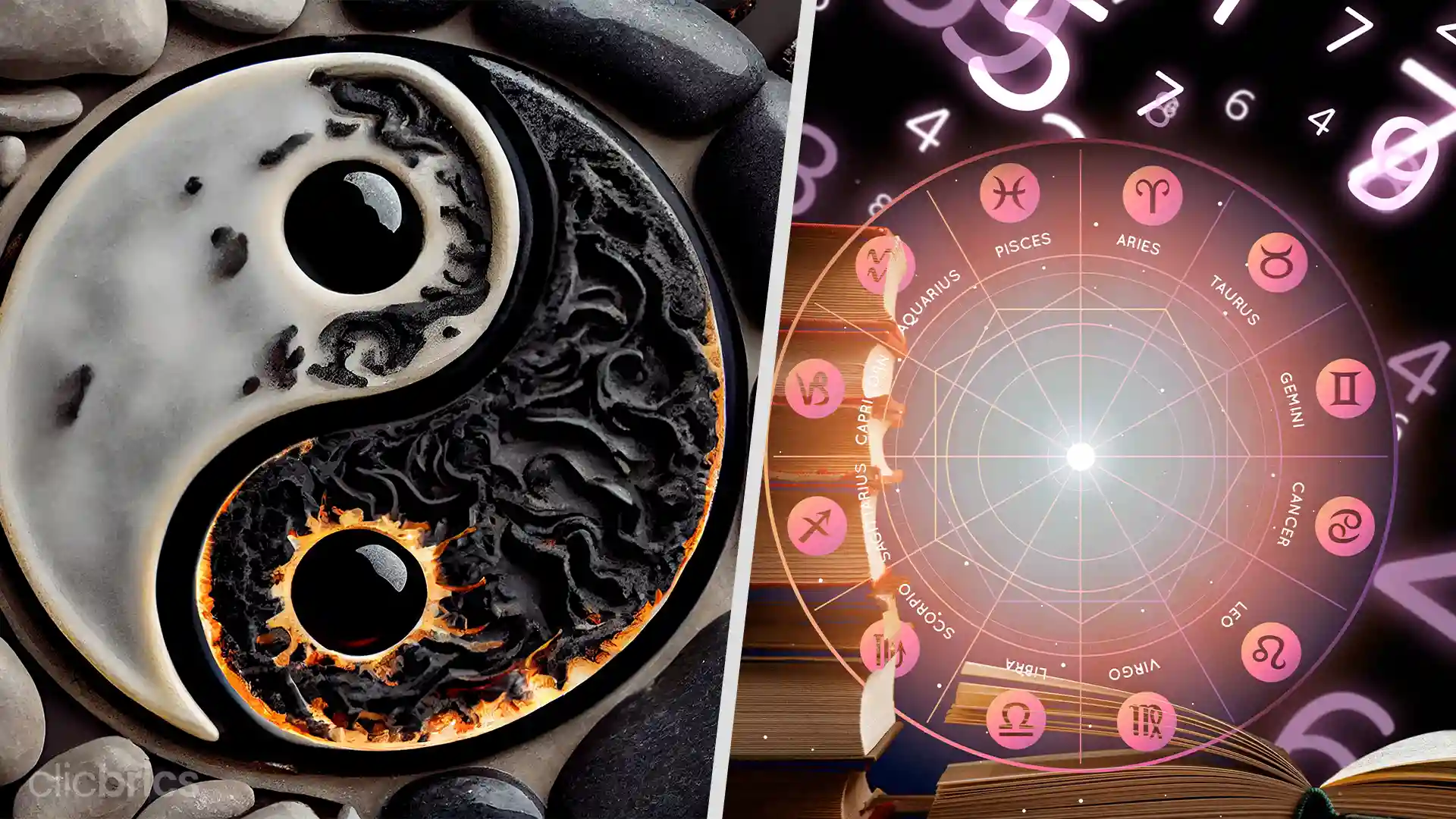
The basic difference between Feng Shui vs Vastu lies in their place of origin. The origin of Vastu can be traced back to the Indian Subcontinent, while Feng Shui has a Chinese origin.
2. Use of Colors

Another key difference between Vastu and Feng Shui lies in their different take on the use of colours. Vastu Shastra emphasizes the use of neutral to light-tone colors, while Feng Shui places importance on the use of bright colors to attract positive energy and fortune.
3. Field of Study
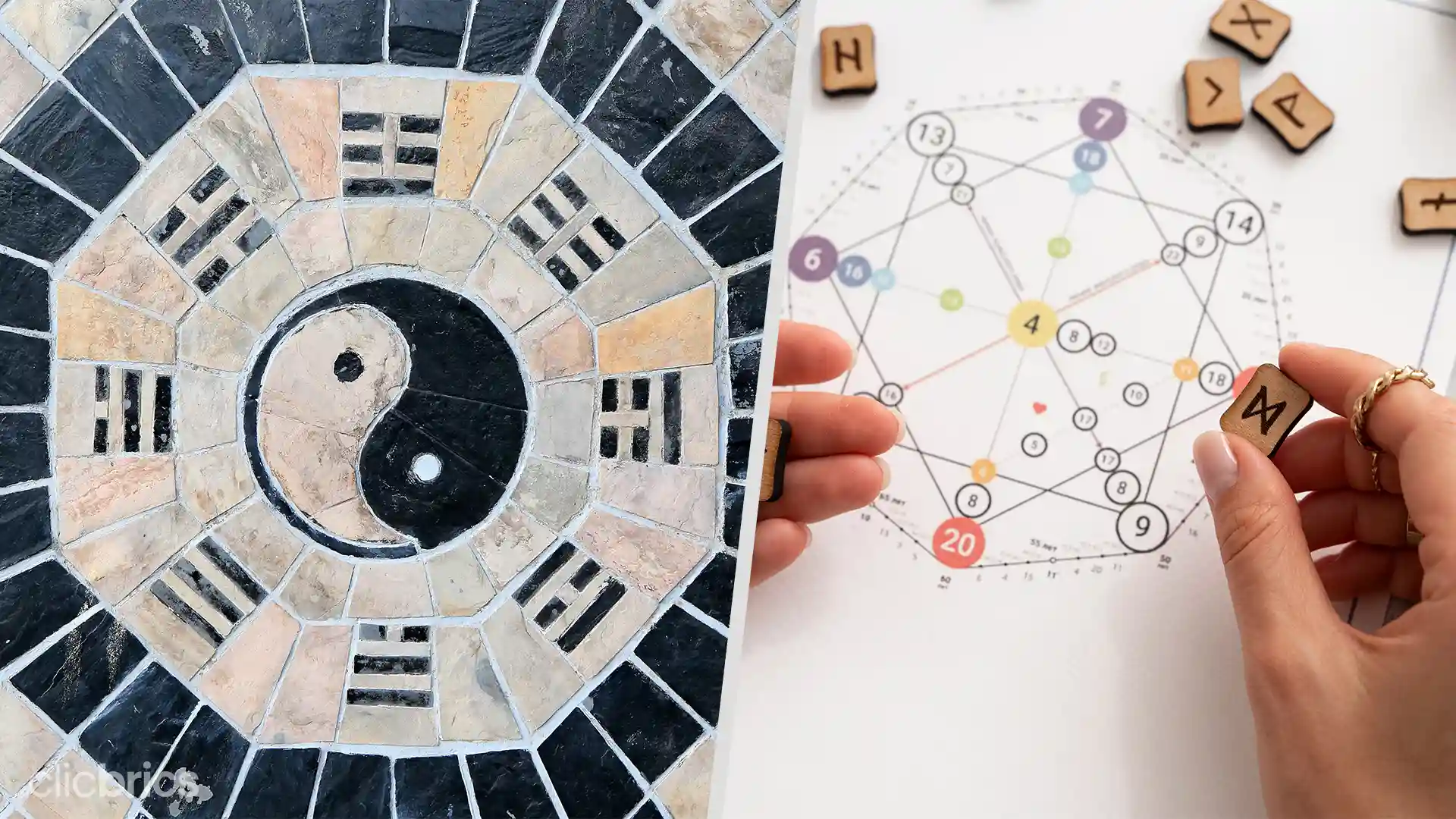
The field of study draws the major difference between Vastu and Feng Shui. On one hand, Vastu Shastra is based on science, whereas Feng Shui is based on geographical conditions.
4. Auspicious Directions
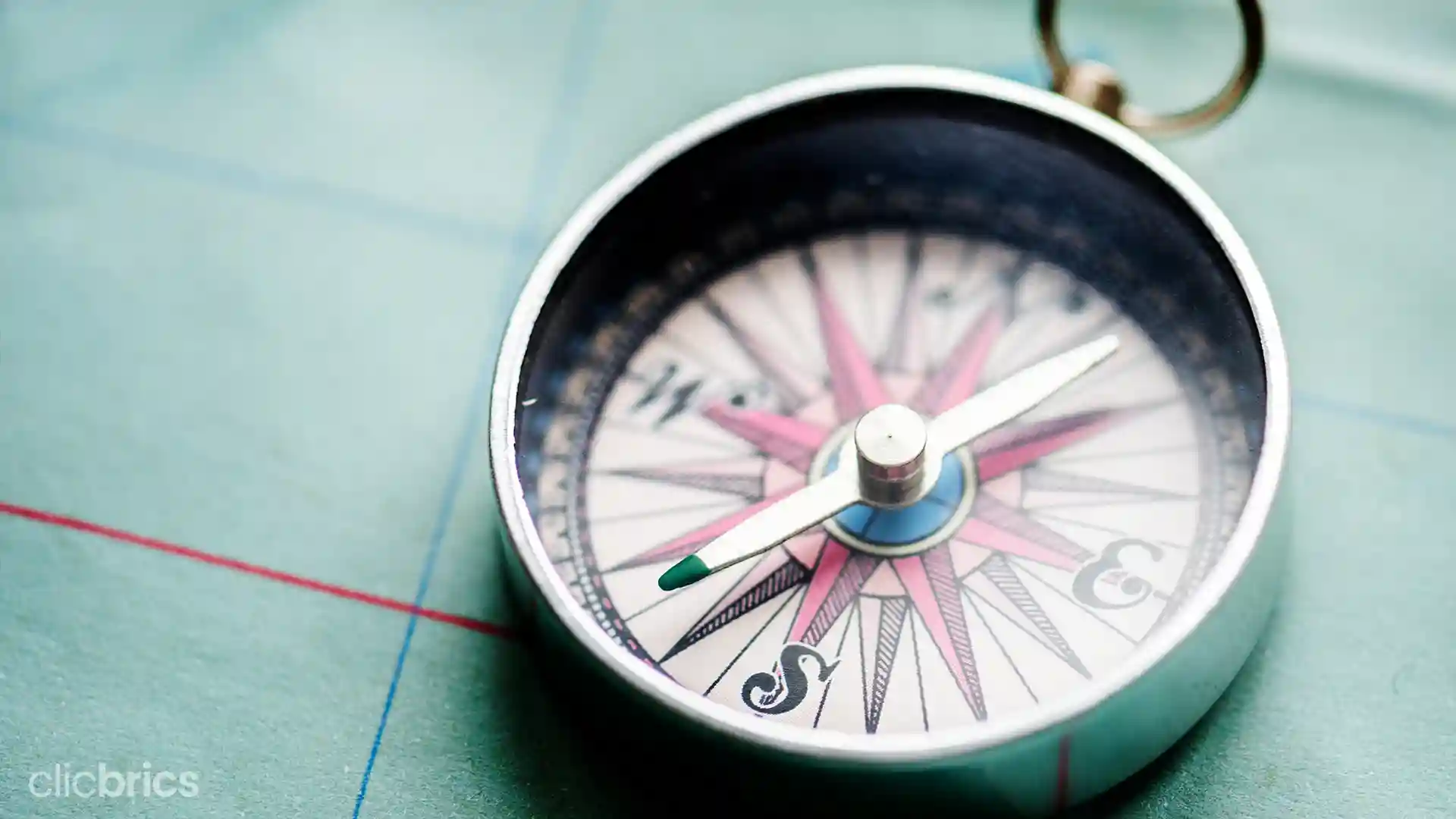
The Vastu Shastra vs Feng Shui difference is incomplete without throwing light on their take with respect to directions. Vastu Shastra considers the north as the auspicious direction, while in Feng Shui, the south is the best direction.
5. Use of Items
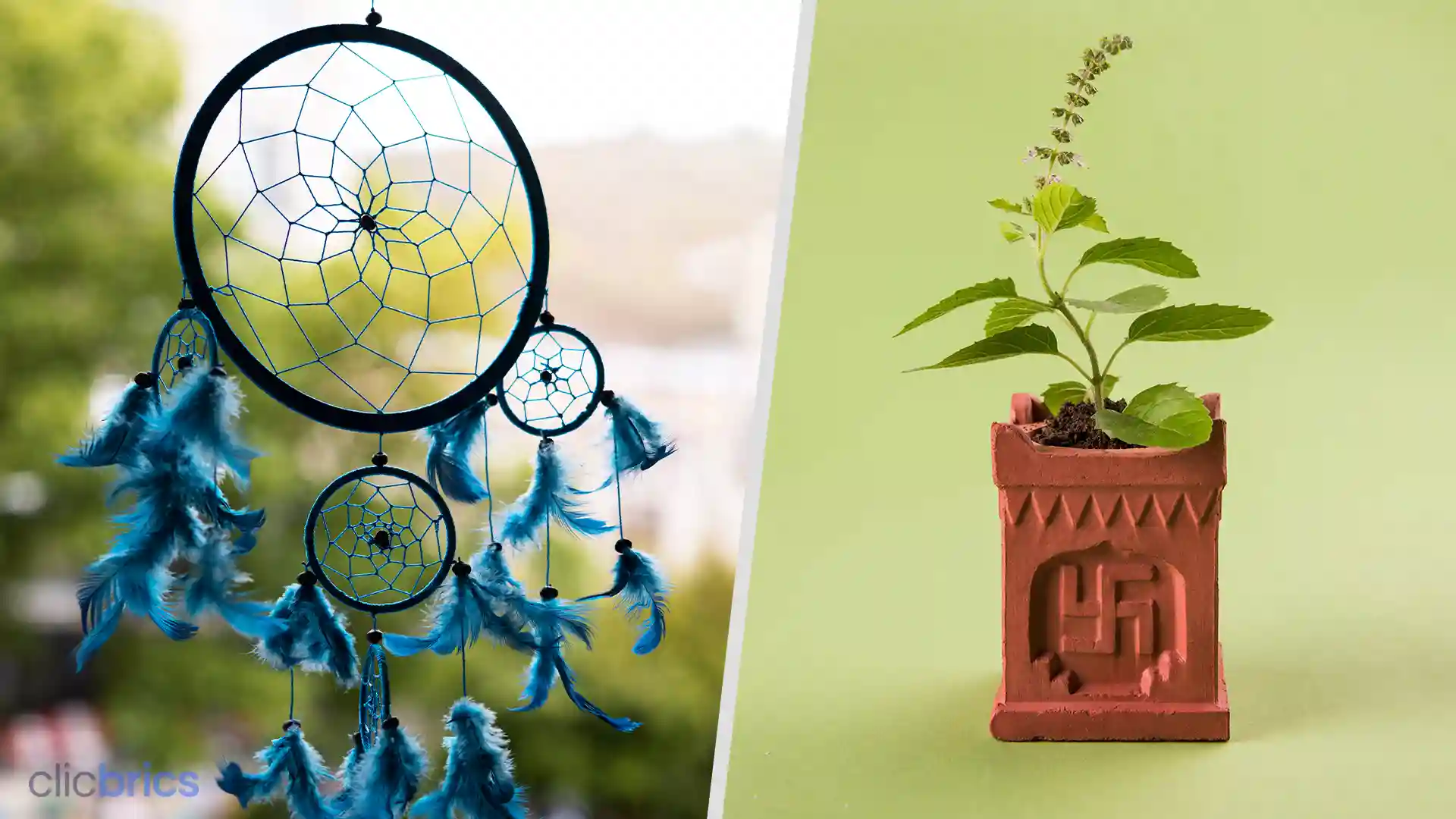
One of the differences between Vastu Shastra and Feng Shui is with regard to the use of items. As per Vastu Shastra, keeping lucky plants like Tulsi and the idol of the Hindu god Ganesh at home brings good fortune. Whereas in Feng Shui, keeping bamboo, wind chimes, and the idol of a laughing Buddha at home is considered auspicious.
6. Remedies
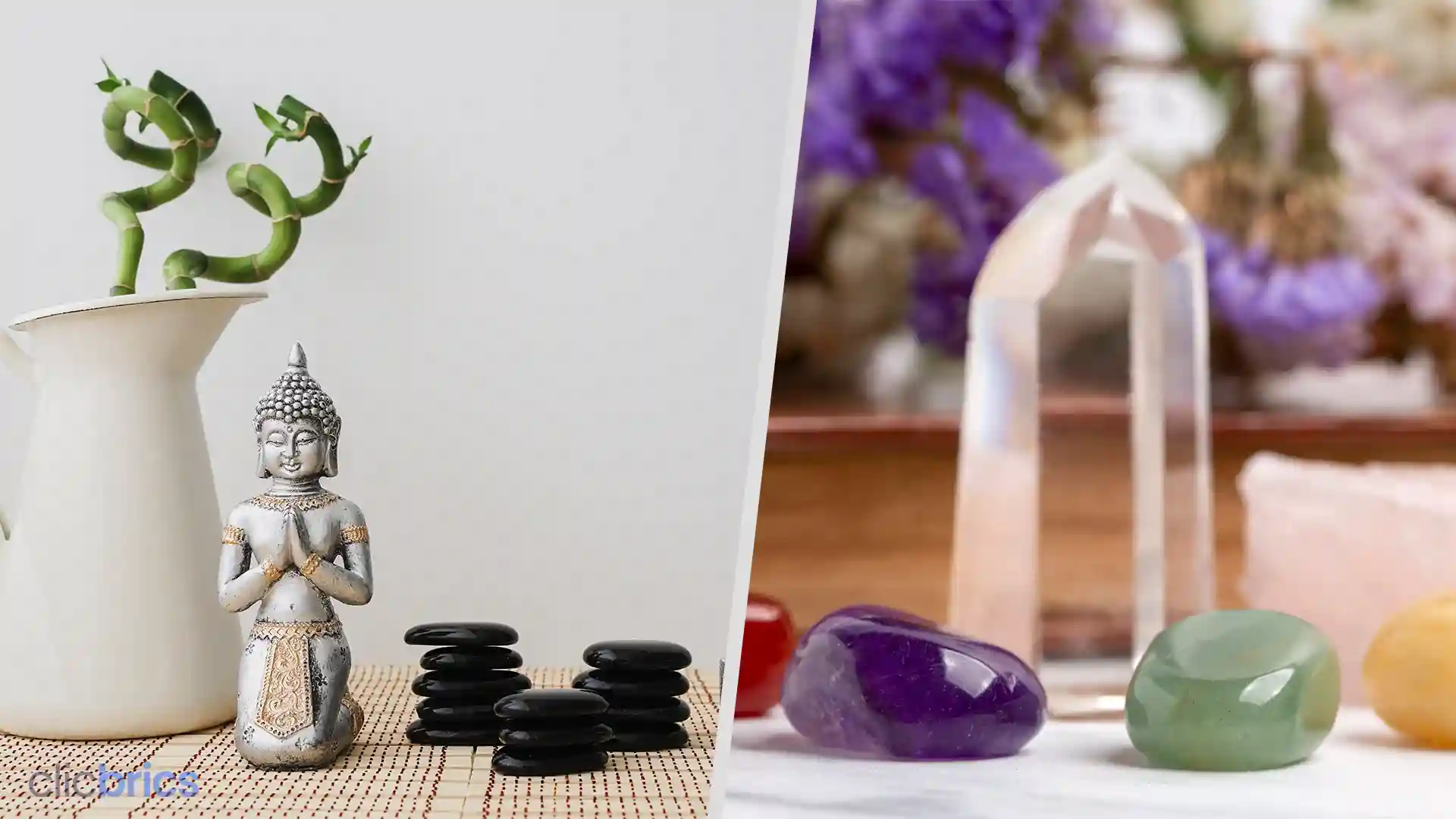
The most important Vastu Shastra and Feng Shui difference lies in their approach to providing remedies. Vastu Shastra recommends the use of vastu crystals as a remedy. Feng Shui remedies involve rearranging furniture using mirrors, wind chimes, and other symbolic objects.
Don’t Miss Reading: 7 Feng Shui Tips to Freshen Your Apartment
Conclusion
In the pursuit of a balanced and harmonious living environment, both Vastu and Feng Shui offer valuable insights and practices. While Vastu leans on the rich cultural heritage of the Indian subcontinent, Feng Shui draws from the wisdom of ancient China.
Ultimately, the goal remains the same whether you choose Vastu or Feng Shui. Both Vastu and Feng Shui aim to create spaces that resonate with positive energy, support well-being, and enhance the quality of life. With their unique philosophies and methodologies, these practices provide us with tools to transform our homes into sanctuaries of balance, peace, and prosperity.